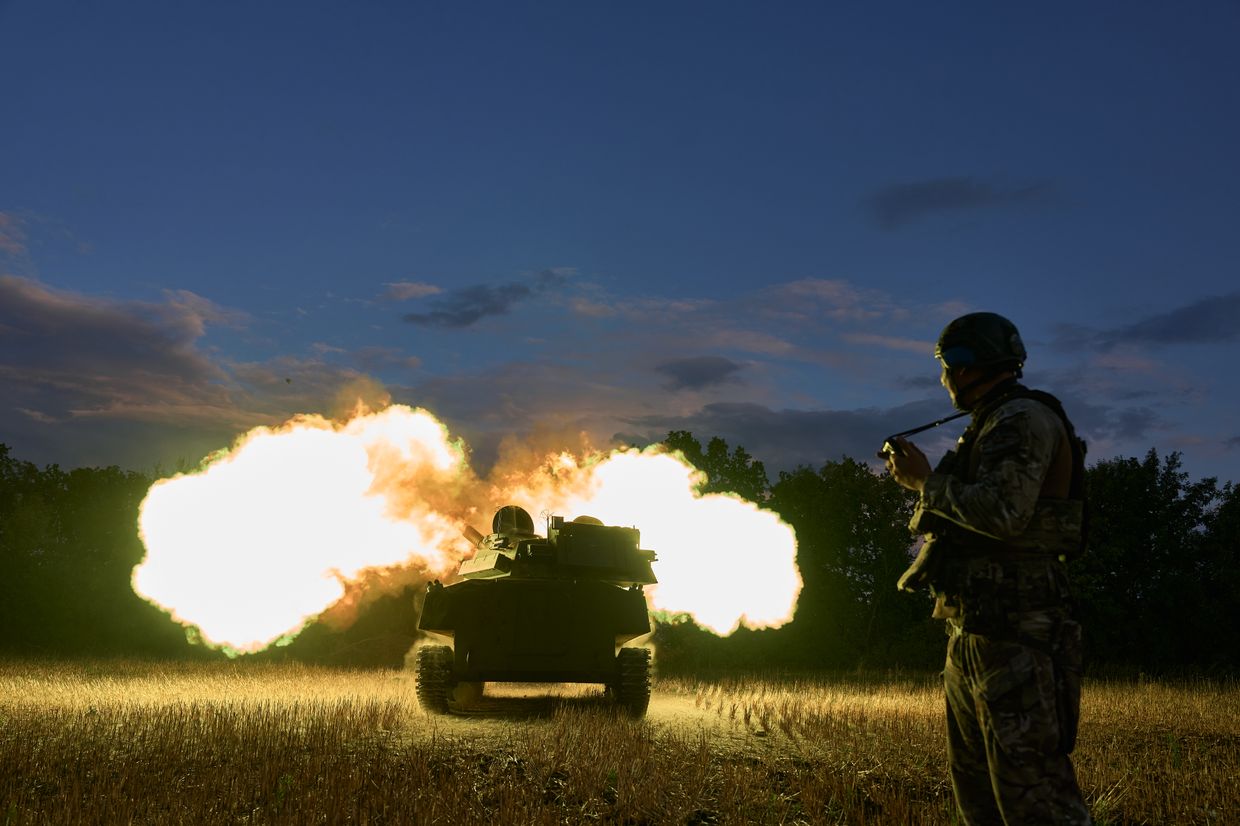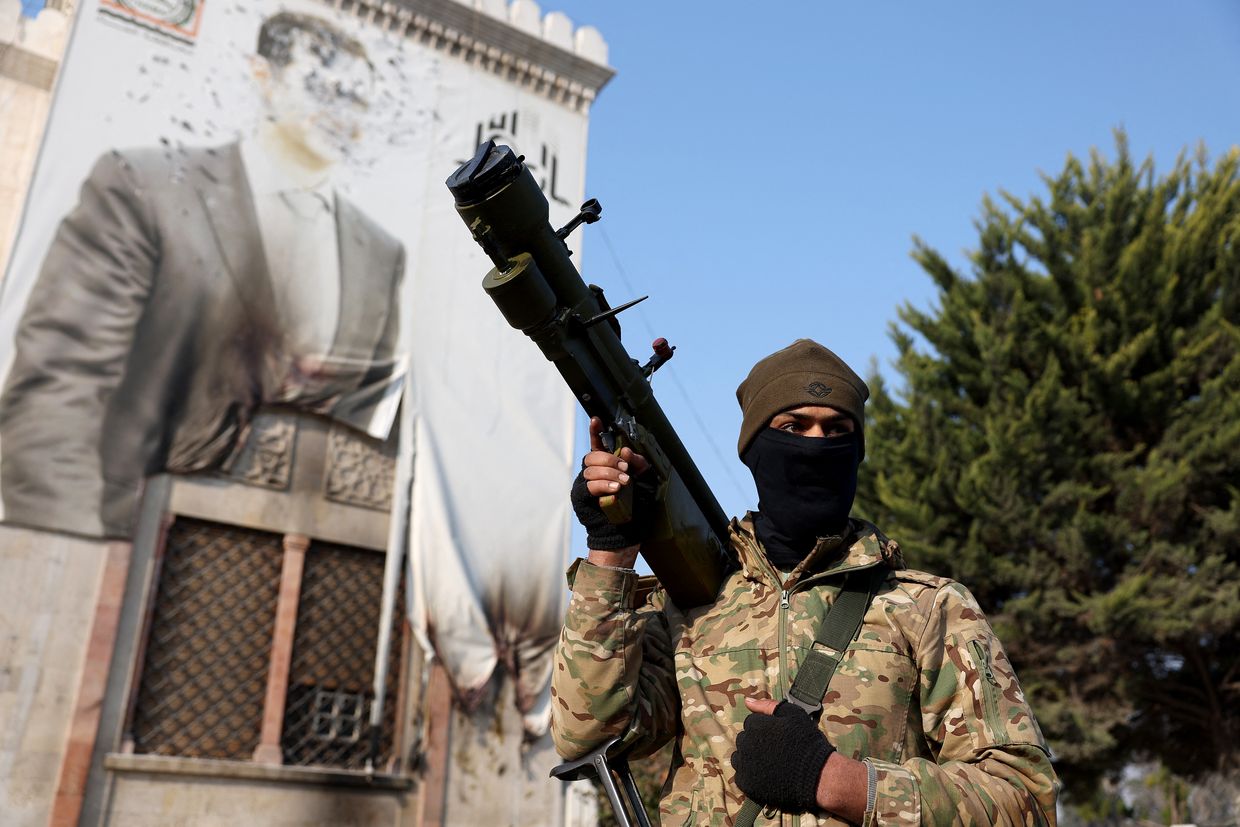Ukraine war latest: Russia's new Oreshnik missile relies on Western manufacturing technology, FT reports

Key developments on Dec. 27:
- Russia's new Oreshnik missile relies on Western manufacturing technology, FT reports
- 3 senior Russian officers killed in HIMARS, drone attack, Ukraine's military intelligence says
- Ukraine working to extend basic training to 2 months, Syrskyi says
- Russia ramps up production of Shahed drones, decoys at Tatarstan plant, CNN reports
- Ukraine repelling Russian attempt to gain foothold in Kherson Oblast, military says
Russia's new intermediate-range ballistic missile, the Oreshnik, recently fired at Ukraine, was developed using advanced manufacturing equipment from Western companies, despite sanctions, The Financial Times reported on Dec. 27.
The missile, launched at Dnipro on Nov. 21, was described by Russian President Vladimir Putin as a response to Ukraine's use of American and British weapons to strike deeper into Russia.
Two key Russian weapons engineering institutes — Moscow Institute for Thermal Technology (MITT) and Sozvezdie — were named by Ukrainian intelligence as developers of the Oreshnik.
According to the Financial Times, they posted job listings in 2024 that specified expertise in operating German and Japanese metalworking systems.
The listings cited Fanuc (Japan), Siemens, and Haidenhein (both Germany) control systems for high-precision computer numerical control machines essential for missile production.
Despite sanctions slowing the flow of such equipment, FT analysis found that at least $3 million worth of Heidenhain components were shipped into Russia in 2024, with some buyers closely tied to military production.
Defense expert Fabian Hoffmann from the University of Oslo suggested the Oreshnik is not a wholly new development but rather a modification of the RS-26 Rubezh missile.
While Putin has announced plans for mass production of the Oreshnik, a U.S. official told The Kyiv Independent that Russia likely possesses only a small number of these experimental missiles.
The reliance on Western machinery points to continued vulnerabilities in Russia's defense industry amid ongoing sanctions aimed at curtailing its military capabilities.
3 senior Russian officers killed in HIMARS, drone attack, Ukraine's military intelligence says
Three senior Russian officers have been killed in a Ukrainian strike using HIMARS and drones in an occupied area of Zaporizhia Oblast, Ukraine's military intelligence (HUR) said on Dec. 27.
HUR said it obtained intelligence on a planned meeting of the Russian personnel, and along with the Unmanned Systems Forces and Security Service of Ukraine (SBU), formulated a plan of attack.
Video released by HUR shows drone footage of several vehicles parked near a road. A large explosion is then followed by what appears to be the detonation of a cluster munition.
The post accompanying the video says High Mobility Artillery Rocket Systems (HIMARS) were used in the initial attack, with strike drones later targeting an evacuation group. It did not state when the attack took place.
According to HUR, the three Russian officers killed in the strike were Captain Nagorny Dmitry Olegovich, commander of the 1st battalion of the 135th motorized rifle regiment, Captain Krokhmalov Grigory Aleksandrovich, deputy chief of staff for intelligence of the 135th motorized rifle regiment, and Captain Fomin Yuri Viktorovich, commander of the anti-aircraft battery of the 4th Guards Military Base.
The Kyiv Independent could not verify the claims.
HIMARS, whose prowess became a popular motif of internet memes, was a game-changer for Ukraine when they first arrived in the summer of 2022.
Initially supplied with GMLRS rockets with a range of around 70 kilometers, they allowed Ukraine to target Russian forces on the other side of the front line far more accurately than they had previously.
In the fall of 2023, the U.S. began supplying Kyiv with an older model of ATACMS – fired from HIMARS launchers – with a range of around 165 kilometers, greatly increasing the range that Ukraine could strike within.
The weapons system is a multiple rocket launcher system mounted to a 6x6 FMTV truck chassis, providing devastating firepower launched from a highly mobile platform.
Its rockets are radar-guided, with a range of around 70 kilometers (over 40 miles). When combined with high mobility, it is the ideal "shoot and scoot" system to target enemy weapons dumps and command posts.
HIMARS success stories are too numerous to count, but in February they were used against a military training ground in occupied areas of Donetsk Oblast where Russian troops were stationed, killing at least 60, the BBC reported.
A U.S. $725 million weapons package for Ukraine announced on Dec. 2 contained fresh supplies of HIMARS ammunition.

Ukraine working to extend basic training to 2 months, Syrskyi says
Ukraine's military leadership plans to extend basic military training to two months to enhance the preparedness and safety of soldiers, Commander-in-Chief Oleksandr Syrskyi announced on Dec. 27.
The initiative follows consultations with the General Staff, branch commanders, and leaders of individual combat units.
"We are currently working to create conditions for the training to last 2 months in total. High-quality training means, first and foremost, the preservation of the lives and health of our soldiers," Syrskyi said.
He noted that recent graduates had completed a revised 1.5-month training course, an improvement from the previous 30-day standard.
While an additional 5-14 days of training within military units is planned, intense battlefield conditions have sometimes limited this step.
Syrskyi emphasized the importance of addressing training challenges and updating basic military training standards to meet current needs.
These efforts complement broader reforms under General Mykhailo Drapatyi, appointed commander of Ukraine's Ground Forces on Dec. 12.
Drapatyi's vision includes transforming the Ground Forces into an "elite" military unit by modernizing training programs, integrating advanced technology, and prioritizing social support for service members.
In July, President Volodymyr Zelensky said that the military suffered from a lack of training facilities for new soldiers, citing the Ukrainian military.
The planned changes aim to improve the effectiveness of Ukrainian forces as they continue to face intense hostilities.
Russia ramps up production of Shahed drones, decoys at Tatarstan plant, CNN reports
Russia has significantly increased the production of Shahed-136 drones and cheaper decoy drones at the Yelabuga drone factory in the Alabuga Special Economic Zone in Tatarstan, CNN reported on Dec. 27.
This facility, located over 1,300 kilometers from the Ukraine border, plays a critical role in Moscow's drone manufacturing strategy.
In 2023, the factory produced 2,738 Shahed-136-type drones, given the name Geran in Russia, with output more than doubling to 5,760 units in the first nine months of 2024.
The facility also began serial production of "Gerbera" decoy drones, which mimic the radar signature of real Shaheds but are made from plywood and foam plastic.
Russia plans to produce 10,000 Gerberas by the end of 2024, twice the number of Geran drones. Each Gerbera reportedly costs 10 times less to produce than a Geran.
The production surge is facilitated by imports of components from China and the recruitment of low-skilled labor, including local teenagers and workers from Africa.
The Alabuga Start project actively recruits African workers for the program, according to the report. Despite official statements of neutrality, China allegedly supplies drone components and technology through a network of 34 companies.
Satellite imagery from March to September 2023 reportedly revealed a 55% increase in production space at the Alabuga site, along with enhanced facility security, including anti-drone cages and a fortified perimeter.
The Yelabuga plant, launched in July 2023, manufactures a range of drones, including Shahed-type drones and reconnaissance models like the Albatross. Russia regularly employs drones and missiles to target Ukrainian cities and infrastructure.
The plant has faced disruptions, including from Ukrainian attacks. On Dec. 23, Ukraine's military intelligence (HUR) reported a fire at a Shahed warehouse in Alabuga, destroying $16 million worth of drone parts.
In April, in an effort to counter Russia's expanding drone production, Ukrainian long-range drones struck the Yelabuga facility.
Ukraine repelling Russian attempt to gain foothold in Kherson Oblast, military says
Ukrainian troops have thwarted a Russian attempt to gain a foothold on one of its islands on the Dnipro River delta, Vladyslav Voloshyn, the spokesperson for the Ukrainian military's Southern Command, said on national TV on Dec. 27.
"Over the past day, (Russia) continued its attempts to land on Kozatsky Island, but was unsuccessful, suffered losses and was unable to land," Voloshyn said, adding that Russia had suffered "losses in equipment, in particular, in boats, watercraft, and personnel."
Voloshyn added that Russia suffered about 150 military losses as well as equipment, including two tanks, amid fighting in the region.
Voloshyn's comments comes amid an anticipated large-scale Russian advance in Kherson Oblast. In early December, Russian troops carried out assaults in the southern region to gain a foothold on islands in the Dnipro River delta.
Kherson Oblast Governor Oleksandr Prokudin said on Dec. 26 that the region was "observing an increase in enemy activity" from sabotage groups, attempting to gain a foothold.
On Dec. 26, Voloshyn said that the Russian military has been trying to advance on Kozatsky Island, Velykyi Potemkin Island, and the southern island of Zabych in recent weeks, and are likely seeking to seize a bridgehead on the western bank of the Dnipro River in order to transfer firepower there.
Kherson and other regional settlements west of the Dnipro River have been subjected to near-daily Russian strikes since Ukraine liberated the area in November 2022, pushing Russian troops to the east of the river.
Russian troops have intensified ground attacks in several areas along the front line over the past few days but failed to break through Ukraine's defense lines, Commander-in-Chief Oleksandr Syrskyi said on Dec. 19.
















